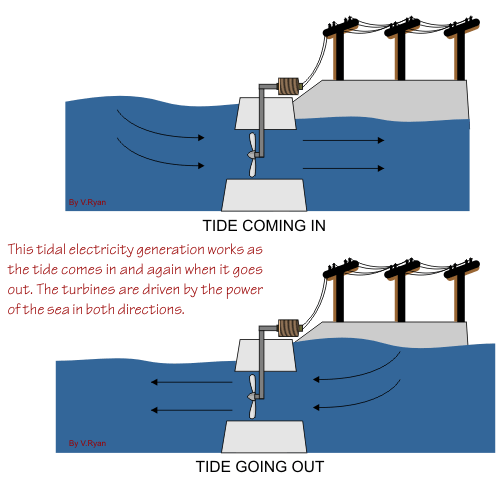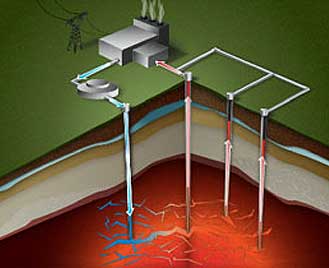Federal and State Governments Should Support Tidal Power
Written by Larry Eisenstat
Published in 2010
5/14/2012
URL:
http://ic.galegroup.com/ic/ovic/ViewpointsDetailsPage/ViewpointsDetailsWindow?displayGroupName=Viewpoints&disableHighlighting=false&prodId=OVIC&action=e&windowstate=normal&catId=&documentId=GALE%7CEJ3010723212&mode=view
Picture: This picture gives a basic overview on how tidal power works. The motion of waves and tides power small turbines. Within a short amount of time these turbines can potentially produce a sizable amount of electricity.
Summary: Currently our country is facing a potential energy crisis. Our heavy reliance on oil and coal will prove to be disasterous unless we start shifting to alternate energy sources. One of the most reasonable options of alternative energy is tidal power. Hydrokinetic power uses the motion of waves to power small turbines and create electricity. The tides are consistant and predictable making hydrokinetic power very practical. Creating power stations along the coast would create despirately needed jobs as well. Hydrokinetic power is not just a hopefull idea or theory, the United Kingdom has been experimanting with since May 2008. Great Britain uses tidal power for 20% of its electricity needs. Tidal power is extremely promising, and not beyond our grasp. We should take advantage of the tides now in order to establish a secure energy future.
Opinion/Reflection: I think tidal power is a fantastic idea to solve the looming energy problem we face in the near future. Tidal energy is extremely predictable and sustainable. The waves will never cease, creating energy day and night. I personally love to visit the beach, and often find myself marveling at the sheer power the tides are capable of. We would find plenty of opportunity in tidal power to create a superior energy future. With plenty of coastal area around the country, shifting into smarter and healthier energy options couldn't be easier.
Questions:
1. What are your thoughts on tidal power? Does it seem useful to you? Why or why not?
2. Do you believe we could potentially look towards tidal power as a major source of energy for our country? Explain your reasoning.
3. What are the problems with tidal power, if any? How could these problems be fixed?


